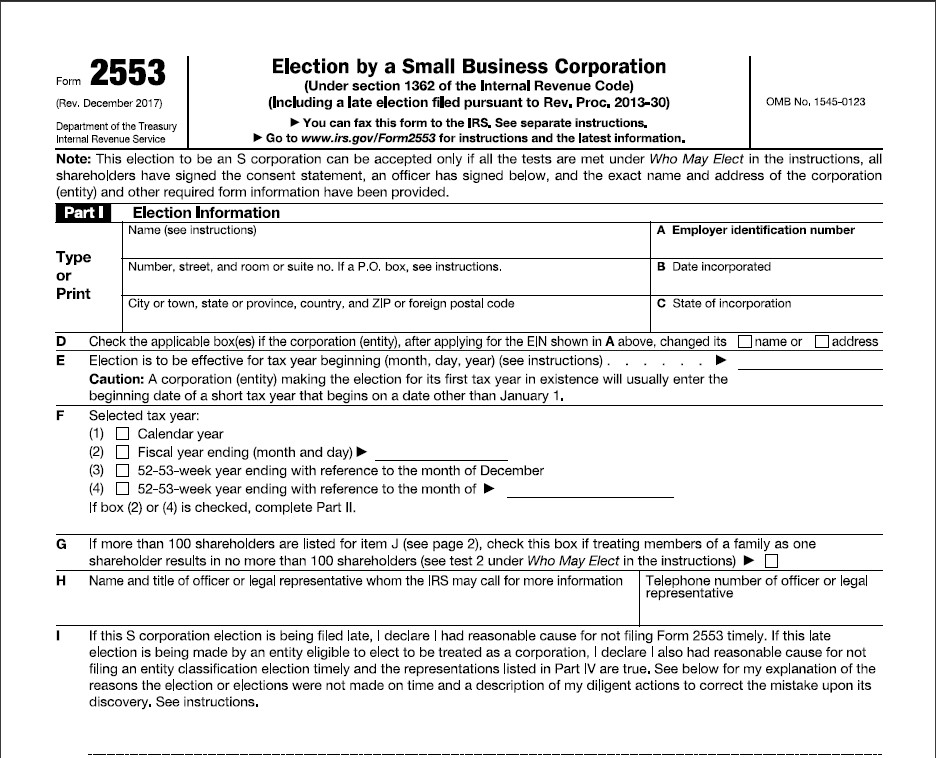Table of Contents
Form 2553 – Election by a Small Business Corporation – Starting a small business can be a thrilling and rewarding endeavor. However, in order to ensure the legal protection of your business, it is important to take the necessary steps to properly establish your business as a corporation. One such step is filing Form 2553 with the IRS: Election by a Small Business Corporation. This form allows you to elect to be treated as an S Corporation for federal tax purposes.
What is Form 2553 – Election by a Small Business Corporation?
Form 2553 is an important document used by small business corporations to elect to be taxed as an S corporation. This form is filed with the Internal Revenue Service (IRS) and it allows a corporate entity to take advantage of certain tax benefits that are not available to standard C corporations. By filing Form 2553, the corporation can avoid double taxation on its profits while still taking advantage of the limited liability protection that comes from operating as a corporate entity.
Filing Form 2553 involves gathering information about shareholders, directors, and other elements of the company’s structure. The company must also make sure that all shareholders agree to become part of an S corporation before filing this form. Once it is filed with the IRS, the company will be subject to different rules than those governing C corporations, including limits on stock ownership and distribution rights for profits and losses.
Where Can I Find Form 2553?
Form 2553, also known as the Election by a Small Business Corporation form, is an important document for businesses. Any business seeking to be classified as an S corporation needs to complete and submit this form. It can generally be found on the website of the Internal Revenue Service (IRS). Or easy way, you can download it on our site.
This form must be completed in order to make sure that your business is properly classified as an S corporation. By filling out Form 2553, you are letting the IRS know that your business meets the requirements needed to become an S corporation and wishes to have it taxed under Subchapter S of Chapter 1 of the Internal Revenue Code. This tax status can provide some important advantages over other types of taxation structures, so it’s important for small business owners to ensure they are eligible and understand what completing this form entails.
How Many Days to File Form 2553?
Form 2553 – Election by a Small Business Corporation is essential for any business that intends to be treated as an S-corporation for federal tax purposes. When deciding on this structure, it’s important to understand how long you have to file Form 2553 with the IRS. This form must be completed within 75 days or 2 months and 15 days of the start of your fiscal year, or within 75 days of when you incorporated the business, whichever is later. Filing late can result in certain penalties and additional fees associated with achieving the desired election status.
The timeline for filing Form 2553 depends on your type of entity and whether or not you’re changing your tax year. For corporations that are just starting out, they will need to submit their form no more than 75 days after the incorporation date for it to be valid.
Form 2553 – Election by a Small Business Corporation
Form 2553 is an important document that all small business corporations are required to submit in order to gain certain tax benefits. This form must be filed with the Internal Revenue Service (IRS) in order for a corporation to obtain the advantages of being treated as an S Corporation. By making this election, a corporation can enjoy many favorable tax rules and regulations that apply only to this type of entity.
Form 2553 must include the name and mailing address of the corporation, as well as its Federal Employer Identification Number (FEIN). It also requires details about corporate officers, shareholders, and board members. Furthermore, the form must include both signatures from two shareholders or board members before it can be submitted to the IRS.
